THE VALUE OF TREES
Trees bring real benefits to our cities, health and well being
by TurfPro Editor, Laurence Gale MSC, MBPR
Each year London's trees remove 2.4million tonnes of air pollution including carbon dioxie, dust and other gaseous toxins.
I have read with interest recently, a number of interesting articles about the value of trees in our cities and urban neighbourhoods, specifically regarding the health benefits they bring via their ability to help cool down our urban island heat effects.
An article in the Evening Standard talks of how last summer London sizzled with temperatures exceeding 30C and global warming is set to make such extremes more common. “Cities get particularly hot during the summer due to the urban heat island effect which is caused by hard surfaces like roads and buildings absorbing heat from the sun,” the piece says. “However, new research from the University of Wisconsin-Madison has shown trees can cool cities down by as much as 5C."
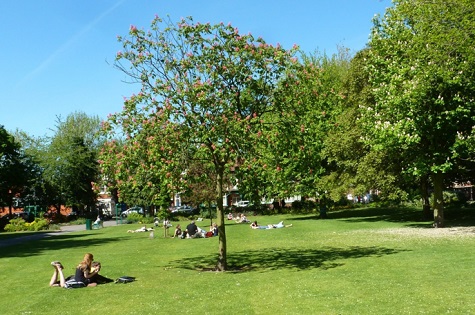
Lead author of the research, Carly Ziter, was quoted by the Standard, saying, "The trees we plant now or the areas we pave now are going to be determining the temperatures of our cities in the next century."
Although a single tree can provide partial relief from hot summer sun, when there are many of them together it has a profound cooling effect. Scientists found that 40% tree cover cools streets more than the pavement warms them up.
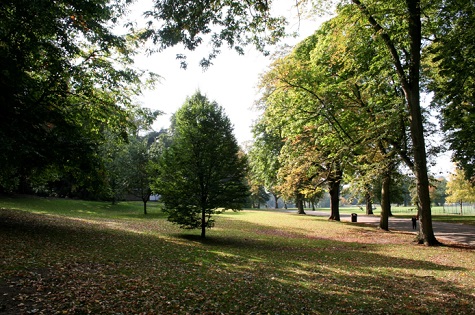
The effect is to create little microclimates - meaning leafy neighbourhoods will stay noticeably cooler than those with less tree cover.
The effects of climate change are already being felt. We’re experiencing warmer, wetter winters, and hotter, drier summers, creating higher temperatures in our cities. Climate change has caused an increase in pests and disease, which had never previously affected the UK. The impact has been an unprecedented threat to some iconic tree species, including ash, horse chestnut and oak.
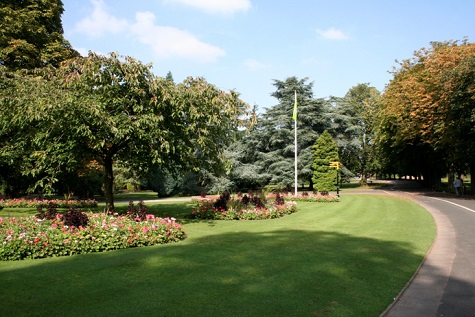
I also recently came across a charity website, Trees for Cities, who are on a mission to plant a million trees. They are well on their way with over 850,000 already been planted by many different community groups schools and landowners
By planting thousands of urban trees worldwide each year, Trees for Cities is building resilience against threats facing the natural environment. Planting a range of tree species enhances structural and functional diversity in woodlands and on city streets, as well as building resistance to pests and disease.
The charity believes that all children should have the opportunity to plant and learn about trees, so they say they are excited to support London primary schools to sign up for free packs of trees as part of Trees for Schools – a programme funded by Defra and delivered in partnership with the Woodland Trust.
Another article I read on The Conversation, discusses, shading benefits that trees bring.
Theoretically, trees can help provide cooling in two ways: by providing shade, and through a process known as evapotranspiration. Locally, trees provide most of their cooling effect by shading. How warm we feel actually depends less on local air temperature, and more on how much electromagnetic radiation we emit to, and absorb from, our surroundings. A tree’s canopy acts like a parasol, blocking out up to 90% of the sun’s radiation, and increasing the amount of heat that we lose to our surroundings by cooling the ground beneath us.
In essence, the shade provided by trees can reduce our physiologically equivalent temperature (that is, how warm we feel our surroundings to be) by between seven and 15°C, depending on our latitude. So it’s no surprise that, in the height of summer, people throng to the delicious coolness of the shade provided by London parks, Parisian boulevards, and Mediterranean plazas.
Another interesting article seen in The Telegraph also explained why we should be planting more trees.
All city trees add beauty and connect you to the natural world, but it is only the monsters that can soften the lines of big buildings and expanses of paving, and significantly improve air quality, soak up rainwater and combat heat.

"In towns and cities, every big tree counts,” says the landscape architect Brita von Schoenaich, who lectures and adjudicates at various UK universities. “But land is now so valuable, especially in London, that it has become very hard to get them into any new development."
Size comes with age, and it is mainly thanks to the Victorians that the streets and squares in our towns and cities are endowed with the hefty tree specimens we see today. However, therein lies another problem, says von Schoenaich. “Many of these trees are now so old that they are approaching the end of their healthy lifespan.” Central London is looking particularly vulnerable, since most of its mature leaf canopy comes from a single type of tree, the hybrid London plane - a tree that may soon be confronted with the lethal fungal disease stain canker, which is now on the march from southern Europe.
Finding a site for any new tree in an urban landscape is seldom easy. It is not just the space required overhead, but also underground. Our streets are now a maze of service pipes and cables which often puts the engineers and tree people in mortal combat – “trench warfare” von Schoenaich calls it.
Much of this ground is also compacted and airless. Once planted, with the ground improved, the tree roots directed and services protected, there is the matter of keeping the tree alive. About 50 per cent of urban trees don’t make it to 10 years old, whether through poor planting, aftercare, damage or change in land use.
As mentioned in all of these articles, trees defiantly bring value to our communities. Can you imagine towns and cities without any trees? They would be very depressing places to live. That’s why our parks, open spaces and urban neighbourhoods are so vibrant. We have a lot of visionaries to thank for leaving us with the landscapes we see and enjoy today.
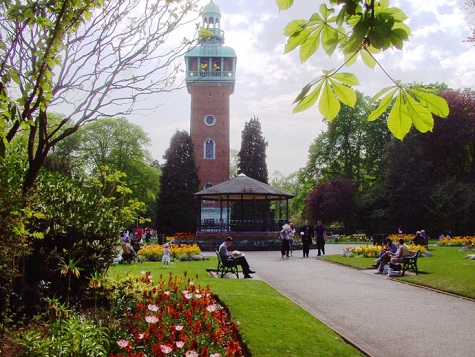
Environmental benefits of urban trees include:
- Trees reduce 'heat island effect' of localised temperature extremes
- Their shade cools streets and buildings in summer
- Help to remove dust and particulates from the air
- Help to reduce wind speeds
- By providing food and shelter for wildlife they help increase biodiversity
- Reduce effects of flooding by slowing the rate at which rainfall reaches the ground
- Help improve polluted ground
Economic benefits of urban trees include:
- Increase property values by seven to 15 per cent
- Larger trees can lift property values in proportion to their size
- Improve environmental performance of buildings by reducing heating and cooling costs
- Mature landscapes with trees can be worth more as development sites
- Can improve the health of local populations
- Provide a long term renewable energy source
I remember when I first started working as a parks apprentice back in 1972, the following year there was a national tree planting scheme called Plant a tree in 73. We were tasked with planting hundreds of semi-standard and heavy-standard rootballed trees in a number of our Birmingham parks.
It seemed to go on for months. However, I am very proud to say that some forty-six years later, those trees have matured into some excellent specimens and bring a lot of joy and value to those open spaces.
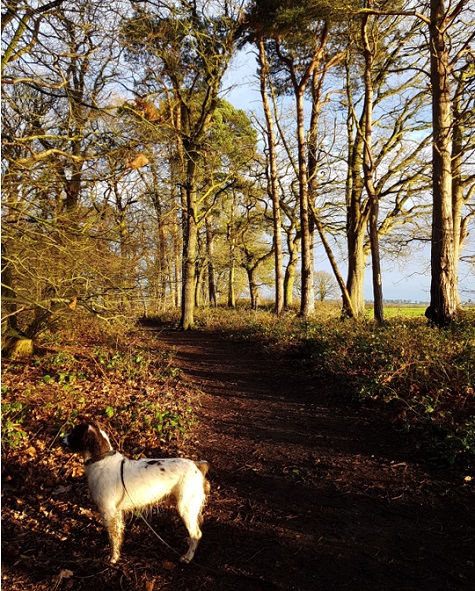
I also know from experience and in my role as editor, I witness a lot of good work being done by many turf and landscape professionals, local authority managers and greenkeepers, who every year try to plant as many new trees as possible.
However, the biggest challenge will be for our local authorities who own most of the urban land in our cities and towns, to find the will and appropriate budgets to facilitate future planting schemes - to succeed some of our original Victorian initiatives.
Let’s hope future governments and councils recognise the value of trees and adequality fund the next generation of tree planting needs for the sake of our grand and great grandchildren.
 |
|
 |  |
ECHO ENTER MOWER MARKET
First ever from manufacturer
Until now, only a lawnmower had been missing from the manufacturer's range of tools, but that has been rectified with the introduction of a new 58V battery powered unit.
Until now, Echo has been known for producing outdoor power tools, both professional and domestic, with only a lawnmower missing from its range.
The company say that has now been rectified with the introduction of a new 58V battery powered mower. Part of their new 58V range, they are keen to point out the new mower is the product of extensive development and built to the same professional standards as all its tools.

The machine is powered by a 58V lithium-ion battery and a brushless motor. It has a run time of up to forty minutes on one battery and comes with a quick charger to fully charge the 4Ah battery in sixty minutes. There are dual battery compartments and a key system activates a second optional battery for user convenience and minimal disruption.
The mower features a 53cm cutting deck and comes with a grass collection bag and mulch plug, offering the options of collection or mulching. Wheel height adjusters with seven positions let users select multiple cutting heights and there is a three position handle adjustment for user comfort. The quick release handle enables compact vertical or horizontal storage.
Echo’S 58V interchangeable battery system allows one battery to fit multiple tools. So the 4Ah battery that comes with the mower can be used with any of the 58V products in the range which, together with the mower, comprises a chainsaw, power blower, hedgetrimmer and trimmer.
Echo offers a one-year professional use or two-year domestic warranty on the LM-58V4AH and there is a two-year warranty on all 58V lithium-ion batteries.
 |  |
STATE-OF-THE-ART GREENKEEPING FACILITIES COMPLETED
At Royal Norwich
Only the second all air-conditioned facility in the country, the building which was reclaimed from an old refrigeration warehouse, benefits from 100% daytime power generated from rooftop solar panels.
State-of-the-art greenkeeping facilities and workshop at Royal Norwich are now complete, meaning Toro now has a home at the new site to work and live.
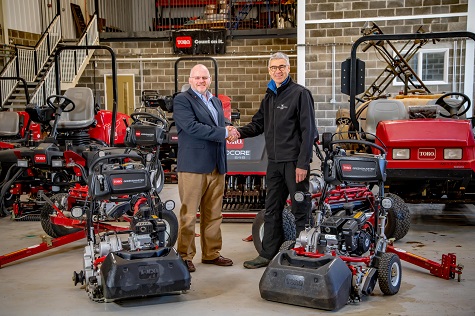
Peter Todd, director and estates manager, right, with Reesink’s Julian Copping in the state-of-the-art greenkeeping facilities and workshop at Royal Norwich.
Only the second all air-conditioned facility in the country, the building was reclaimed from an old refrigeration warehouse and now houses a team room with pool table, stylish meeting rooms for business meetings, state-of-the-art workshop and parts storage, a ‘boot room’ with washing machine and dehumidifier, showers, every convenience has been thought of, confirms Peter Todd, director and estates manager, including its green credentials:
“It’s completely insulated, so will be highly efficient. 100 percent of its daytime power is generated from the solar panels on the roof as well as supplying 40 percent of the clubhouse electricity needs.”
The facility has been home to a loan fleet of used Toro equipment, compiled to accommodate the growing-in phase of the courses, but now it welcomes the beginning of Peter’s Toro fleet.
Reesink’s Trevor Chard who has worked with Peter for more than 18 years, first at The London Club where they introduced of a new Toro fleet of machinery and now at Royal Norwich, says: “There are so many different requirements when tending new and growing-in turf. For example, it’s pedestrian mowing to start with to prevent bruising the grass and only once the grass is more established that ride-ons will be required. It’s tough, unforgiving work for the fleet, there’s a lot of dust and stones to contend with as the earth moves and settles into its new formation.”
Here, Peter takes over again: “If my time in construction at Gleneagles taught me anything, it’s that you can never predict what a new course will throw at you. One thing I didn’t envisage was using rotary mowers on the tees for example! But dwarf perennial rye grass in a blend with fescue took hold and grew so quickly in those early days, we needed to get on top of it fast and only a rotary would do.”
Now joining the loan fleet which has worked so hard in the early stages are four Flex 2120 pedestrian mowers for hand cutting the greens, a Greensmaster 1600 for the tees and a Groundsmaster 4500-D and Groundsmaster 3500-D are taking on the initial mowing of the fairways and semi-roughs.
Peter concludes by saying: “With things on a new course moving so fast and so many different requirements at each stage, I knew I needed a machinery partner that would be flexible and accommodating. I respect the Toro brand and have enjoyed working with Trevor for all these years, but I needed to know I had flexible and immediate support, Reesink’s East Anglia service division gave me that.”
 |  |
SEMINAR KICKS OFF BOWLING SEASON
Well attended by greenkeepers
Held at the Herts Bowling Club in Watford, this most recent Dennis & Sisis bowling green seminar seminar offered attendees advice and tips on best practice.
With the season fast approaching, greenkeepers made their way to the recent Dennis and SISIS Bowling Green Maintenance Seminar, in order to gain advice and tips on best practice.
The seminars, which are designed to educate on how to maintain and look after bowling greens, have been credited for improving the greens at numerous bowls clubs throughout the country. Combining insightful seminars and practical tips, a number of industry experts take to the stage to discuss a wide range of key topics.
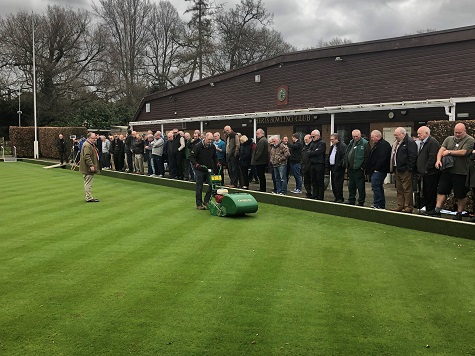
Held at the Herts Bowling Club in Watford, this most recent seminar attracted 80 greenkeepers.
After an introduction from Dennis and SISIS’ Robert Jack, the seminar welcomed the extremely knowledgeable sports turf consultant Alan Lewis, who drew upon his wealth of experience to deliver a presentation entitled ‘Spring Maintenance on a Bowling Green.’
Grass seed was the next topic of the day when Luke Hunt from Barenbrug UK advised delegates on how to choose the correct seed for their greens.
A refreshment break allowed attendees to soak up and discuss the advice they had just received before John Noyce from Collier Turfcare took to the stage to offer an insightful look into ‘Chemical & Fertiliser options.’
The ever popular Turf Clinic followed and enabled all of the greenkeepers to ask their own questions to the panel of expert speakers.
After a complimentary lunch, an on-green demonstration took place in which delegates got the opportunity to see a number of turf maintenance techniques in action.
Kev Brazier, a contract greenkeeper working in partnership with Harpenden Bowls Club, felt that the seminar was a great opportunity to enhance his greenkeeping knowledge.
“It was a really informative seminar. The speakers had great knowledge and they presented it in a way in which everyone could understand. I was particularly interested in hearing that there is actually a place for Dwarf Ryes on bowling greens in certain situations.
“It was brilliant for networking and there was a broad range of subjects discussed. They were all incredibly relevant and I took a lot away from the spring maintenance tips.”
John Hay, Hertfordshire bowls greens co-ordinator, worked alongside Dennis & SISIS in arranging the seminar and felt that the day was a huge success. He said, “Most of the people who attend these seminars are people who work voluntarily to support their clubs and therefore seminars like this can really make a big difference.”
Dates and venues for forthcoming seminars are:
- Tuesday 9 April - Hykeham Bowls Club, North Hykeham, Lincolnshire.
- Wednesday 10 April - Ashbourne Bowls Club, Ashbourne, Derbyshire.
- Thursday 11 April - Hewell Bowls Club, Redditch, Worcestershire.
To register for the free events, contact Roger Moore on 01332 824777 or email roger.moore@dennisuk.com.
 |  |
DEERE ELECTS PRESIDENT, CHIEF OPERATING OFFICER
John C May takes role
Effective from 1st April 2019, John C May will be responsible for leading John Deere’s efforts to "maximise operational excellence throughout the company".
Deere & Company has announced that its Board of Directors elected John C May, 49, as President, Chief Operating Officer, effective from 1st April 2019.
A statement from the manufacturer said that John will be responsible for leading Deere’s efforts to "maximise operational excellence throughout the company".
Jonn C May has been with Deere for 22 years and joined the senior management team in 2012 as President, Agricultural Solutions and Chief Information Officer. Last year he was named President, Worldwide Agriculture & Turf Division, with responsibility for the Americas and Australia, the Global Harvesting, Turf & Utility and Crop Care Platforms, and the Intelligent Solutions Group. Earlier in his career, John headed the company’s China operations, served as factory manager at the Dubuque Works in Iowa, and was Vice President of the Turf & Utility Platform.
“John's record of success and proven leadership skills make him highly qualified for this broader role,” said Samuel R Allen, Chairman and Chief Executive Officer. “In addition, his leadership of the company's precision agriculture initiative and experience as chief information officer will serve him well as Deere moves ahead on its digitalisation journey.”
Deere also announced the election of three other leaders to new positions, effective from 1st April. These include:
- Cory J Reed, 48, to the position of President, Worldwide Agriculture & Turf Division, Americas and Australia, Global Harvesting and Turf Platforms, and Ag Solutions. Reed joined the company in 1998 and most recently has been President, John Deere Financial.
- Rajesh Kalathur, 50, to the position of President, John Deere Financial and Chief Information Officer. Since joining Deere in 1996, Kalathur has held positions in finance, business development, logistics, operations and marketing. Since 2012, he has been a member of the senior leadership team as Senior Vice President and Chief Financial Officer. He assumed the added responsibilities of Chief Information Officer in 2018.
- Ryan D Campbell, 44, to the position of Senior Vice President, Chief Financial Officer. Campbell joined John Deere in 2007 and has held a number of management positions within the finance function. He became Vice President and Comptroller in 2016 and last year was named Deputy Financial Officer.
 |  |
HUSQVARNA WINS RED DOT DESIGN AWARD
For Automower 435X AWD
The Red Dot Award is one of the world’s largest product design competitions and this year Husqvarna's latest robotic mower has triumphed.
Husqvarna has achieved the Red Dot Award in the category of product design for its recently launched Automower 435X AWD.

The robotic lawnmower has received the accolade which is awarded by a renowned international jury to products that feature an outstanding design.
The Red Dot Award is one of the world’s largest product design competitions and this year, designers and manufacturers from 55 countries entered more than 5,500 products in the competition.
“This marks a significant achievement for our design team. We are proud that we have created a winning product that offers customers an excellent experience, through both performance, functional benefits and outstanding desirable design”, said Rajinder Mehra, brand design director at Husqvarna Division.
Professor Dr. Peter Zec, founder and CEO of Red Dot said, “I would like to congratulate the laureates sincerely on their wonderful success. The fact that their products were able to satisfy the strict criteria of the jury bears testimony to their award-winning design quality. The laureates are thus setting key trends in the design industry and are showing where future directions may lead."
 |  |
GROUNDCARE DEMO DAY SET
By Vincent Tractors & Plant
For the fourth year running Cornwall and Devon groundcare machinery supplier, Vincent Tractors & Plant, have a Professional Groundcare Demo Day upcoming.
For the fourth year running Cornwall and Devon groundcare machinery supplier Vincent Tractors & Plant will be holding a Professional Groundcare Demo Day where visitors will be able to put the next generation of lawnmowers and chippers through their paces.
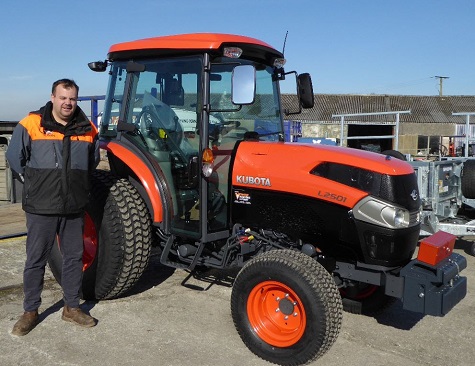
Jon Day, Vincent Tractors & Plant, groundcare salesperson for Mid & West Cornwall
The event takes place on Wednesday 10th April 2019 between 10:00am and 3:00pm at Bodmin Rugby Club, Turfdown Road, Bodmin, PL30 4AW.
The dealership will be showcasing its professional range of groundcare equipment from a wide range of manufacturers such as Kubota, Baroness, Trimax, GreenMech, Ferris, Spider, Kersten and Stiga. As in previous years there will be working demonstrations where visitors will be able to put some of the machines through their paces.
Jon Day, groundcare salesperson for Mid & West Cornwall said, “We are excited to be holding this event again. This is a fantastic opportunity for visitors to come along and find out more about the range of professional groundcare machinery that we can supply. The Vincent Tractors & Plant team, together with representatives from some of the manufacturers will be on hand to answer visitors’ questions.
“This year we will have a number of our popular Kubota and Stiga ride-on mowers, as well as more specialised pieces of machinery such as the remote-controlled Spider mowers.”
To register your interest in attending the event either call Vincent Tractors & Plant on 01726 860332 or email jenna.k@vincenttractors.co.uk
 |  |
SOILS CONFERENCE RETURNS
Taking place in September
SoilsCon, the landscape industry’s conference for soil-related topics, will be returning once again to Phyllis Court in Henley-on-Thames, Oxfordshire on September 26th.
SoilsCon, the landscape industry’s conference for soil-related topics, will be returning once again to Phyllis Court in Henley-on-Thames, Oxfordshire, on Thursday, 26th September.

This year’s event will be the fourth soils conference to be organised by soil scientist and landscape consultant Tim O’Hare, and it promises landscape architects and specifiers, contractors, garden designers, developers, topsoil manufacturers, local government officers, and wider industry professionals a day of invaluable professional development, discussion and debate, with presentations by some of the country’s leading experts in their respective fields.
This year’s speaker line-up features:
- Tim O’Hare, Principal, Tim O’Hare Associates
- Tim White, Senior Associate, Tim O’Hare Associates
- Simon Leake, Managing Director, SESL Australia
- Neville Fay, Founder/Director, Sustainable Soils Alliance
- Sarah Morgan, Chair, Society of Garden Designers
- Andy Spetch, National TOPSOIL Manager, British Sugar TOPSOIL
- James Hewetson-Brown, Managing Director, Wildflower Turf
Subjects will include:
- Establishing low fertility habitats, referencing low phosphorous soils in Australia
- Reversing the current crisis in soil health by using soils sustainably
- Problems with soils on new housing developments and how to avoid them
- The soils project planning cycle that every landscape and construction professional should follow
This year’s conference will again include a Soil Surgery, held during the day’s networking periods. Members of the Tim O’Hare Associates team will be on hand to help delegates with their specific soil issues.
The final programme and conference details will be issued shortly but to express interest in attending, email info@toha.co.uk or call 01491 822653
 |
|
 |  |
LOOKING FOR A CAREER WITH A BRIGHT FUTURE?
John Deere dealerships across the country offer exciting opportunities working with the latest technology
We are recruiting technicians, parts personnel, parts & service apprentices and sales staff.
We’re a company that values practical skills, problem solving, team work and initiative. We are recruiting
- technicians
- parts personnel
- parts & service apprentices
- sales staff.
Visit our website www.JohnDeere.co.uk for details and how to apply.
Email us 31enquiries@johndeere.com
ADVERTISE YOUR JOBS HERE
Amazing success rates!
Advertise your recruitment needs on TurfPro Weekly Briefing and reach our targeted audience of recipients every week.
Contact Nikki Harrison for details - 01491 837117
|
 |  |
 |  |
 |  |
 |  |
 |  |
NEW HORIZONS FOR THE HATTERS
Investment paying off at Kenilworth Road
by TurfPro Editor, Laurence Gale MSC, MBPR
Luton Town FC will finally get the chance of a mad hatters tea party if they get promoted into the Championship at the end of the season.
It has been fourteen years since my last visit to Luton Town FC and in that time there has been a lot of activity and changes to the club’s fortunes, staff and set up. The only remaining aspects from the club back then is that they still play at the Kenilworth Road Stadium and Richard Bird is still their head groundsman.
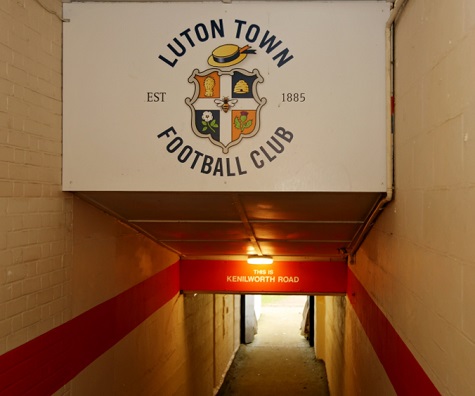
Since its inception the club have had many ups and downs however, In 2008 the club’s administrator declared Luton Town 2020 Ltd as preferred bidders to take over the club - a consortium of lifelong supporters who are successful businessmen, including current chairman David Wilkinson as joint-first investor, brought together by CEO Gary Sweet and director Stephen Browne. This coincided with the signing of one of the club’s legends ex favourite players Mick Harford as club manager.
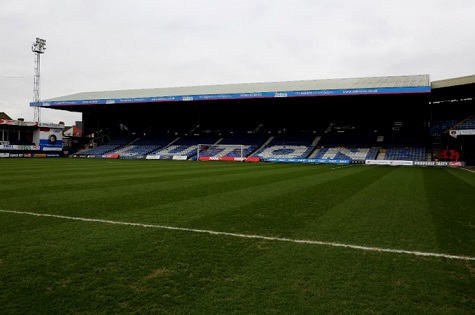
Since Mick Harford’s appointment, the club have been on a journey of success both on and off the field. Under the guidance of the new owners, the club have seen some good investments in both players and facilities. Particularly with the acquisition of the club’s new training complex and finally after many years of trying, finally getting planning permission for a new 17,500-seater stadium - earmarked for completion in the next three years once other projects have been completed.

The club was granted planning permission for the venue – located in the town centre on the derelict site of a former power station – by Luton Borough Council earlier this year, but the Power Court stadium approval relied on councillors also backing proposals for a new retail and leisure park at Newlands Park near the M1 motorway.
The project has been designed to fund the stadium project and will include leisure facilities, offices, retail units, restaurants and a 300-bedroom hotel.
The two projects are estimated to bring in the region of 10,000 jobs to Luton, and a boost to the local economy to the tune of £250m annually.
On the field of play, the club are currently topping League One with only a handful of games to go. A recent four-nil win over Doncaster saw them 5 points clear of Barnsley and in a good position to possibly take an automatic promotion spot to the Championship if they can continue their winning streak.
I met up with Richard Bird at the club’s new training complex that they acquired in 2016, taking out a long-term lease of Venue 360, the old site of the Vauxhall Recreation Centre, to the west of the River Lea. The private 17-acre facility is now the daily base for the Hatters’ squad and is known as ‘The Brache’.
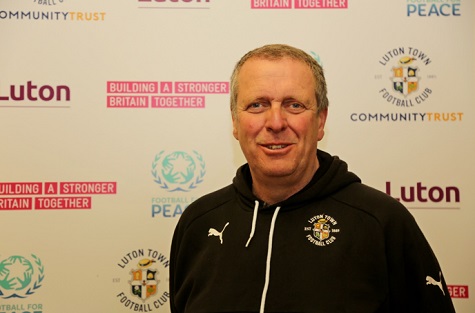
Richard was very keen to show me around the site so I could see for myself the investment the club had made in the last three years. As soon as the club acquired the ground, they began work on upgrading the natural grass pitches (June 2016), bringing in White Horse Contractors to carry out the works. Phase one saw a 14,000m2 area (area 1) be reconstructed, taking off the top soil, relevelling, ameliorating with 2000 tonnes of sand and sown down with a dwarf ryegrass DLF Johnsons promaster seed mixture.
A new primary drainage system was installed at 5m centres, followed by a second tier of sand slits at 0.5 metre centres. A fully automated irrigation system was also installed by Top Turf Irrigation, with all the work completed and grown in by October 2016. Phase two (May 2019) will see the extension of area 2 to enable the club to have more pitches and training space that will also encompass the installation of a new two-tier drainage and irrigation system.
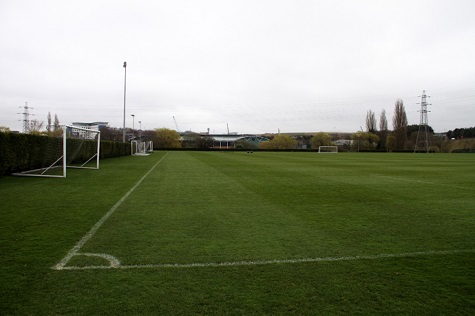
The site also provides a full size 4G artificial pitch that’s predominantly used by the academy, Luton Ladies, U18s and the junior section. The club have also invested heavily in refurbishing many of the exterior buildings and office space they took on with the lease. These facilities now provide the players, coaching staff and administrators with excellent facilities, such as a gymnasium, changing rooms, physio, rehabilitation/ conditioning rooms and office space for the manager and his staff.

Luton Town chief executive Gary Sweet has been quoted as saying, “These facilities are a major step forward for Luton Town Football Club. It cannot be underestimated how important this development at The Brache is to our long term football aspirations. Having a first-class training facility will elevate the team’s prospects on the pitch and ambitions for the progress of the club as a whole.”
Gary Sweet continued, “The training ground is the players’ working office and this environment is fundamental to developing a spirit among the team, maintaining their general well-being, their fitness and contentment. Not only that but being able to boast such comprehensive, fresh new training facilities will help us to attract better players to Luton Town.
In fact, Richard was very keen endorse his, chief executives’ words during our tour of the facilities. Having spent the last twenty-six years working on the grounds, he himself has seen the hard times with little investment in the facilities over the years, having to make do with limited resources.
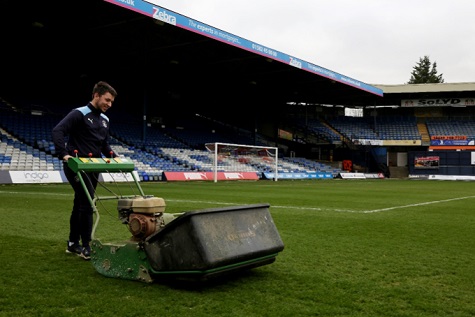
Since the forming of the new ownership, the club seems to be moving in the right direction. The investment they have made in terms of improving the playing surfaces has been immense. The club have also taken on two new members of staff (Troy Mayo and Josh Giblenn) in the last twelve months to work alongside Richard and Roger Osborne. Roger has been with the club ten years.

Troy is currently doing his level 2 in Sportsturf at Oaklands College. Previously a greenkeeper, he soon found himself working at Wembley on match days and enjoyed the work so much he decided to apply for the job at Luton. As for Josh he studied Horticulture at Shuttleworth College. With a lot of hedges, shrub beds and amenity areas in an around the site, Josh’s horticultural skills come in handy.
Over the years Richard has built up a good working relationship with the local colleges, with the club gaining the opportunity to offer work placements to a number of students at Shuttleworth. During my visit, I met up with Joe Walsh who himself was completing a three-week placement at the club.
Richard and his team are responsible for maintaining all the playing surfaces at both the old and new training grounds and Kenilworth Road Stadium. In total they look after five full size pitches and a number of training areas. Most, if not all the training pitches are soil-based pitches.
The Kenilworth road stadium is a fibre sand constructed pitch. Work is centred around keeping the pitches in a playable condition for both matches and training. Priority is focused on the new training pitches and stadium. Dennis G860’s cassette mowers are used to cut and maintain the stadium pitch cutting at a height between 23-30mm depending on the time of the year. The club currently use a five gang Baroness cylinder ride on mower to cut the training pitches.
This year’s end of season renovations of the stadium surface will be centred around topping up the fibre sand material in the pitch. Premier Pitches will be undertaking the work with the aim of fraise mowing off the top 6mm, incorporating 100 tonnes of new fibre sand into the top 75mm of the pitch, releveling and over seeding with Rigby Taylor R14 CR. As for the training pitches, this year they all will be deeply scarified, topdressed with 80 tonnes of sand and reseeded with the same grass seed mixture.
The club also own their own Charterhouse Verti Drain and use it to decompact the pitches and training areas on a regular basis. They also have a Toro Procore for use on the stadium pitch. Richard predominately uses a granular feeding regime on all pitches, however, this year Richard is keen to start using a number of liquid foliar products to compliment is granular programme.
Pitches at both the stadium and training grounds are marked out using a iGO line marking machine and duraline paint.

It was heartening to see that Richard is finally getting the right investment into his pitch facilities and staff to cope with the ever-demanding needs of the coaches and players.
It seems the club is in a good place and hopefully they will continue to improve and get their just rewards for all the hard work being done by all who work at the club. I would love to see both Luton Town and my old club Portsmouth back in the Championship.
 |
|
|
|